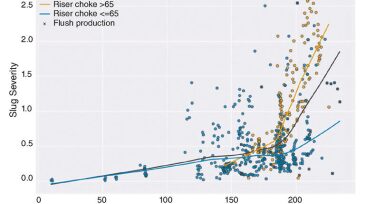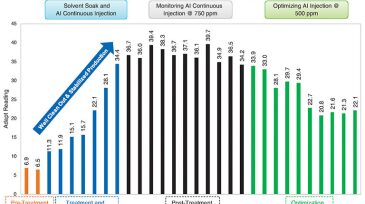Flow assurance
The research facility said it plans to add multiphase-flow-testing capabilities for heavy oil and different viscosities.
This paper compares various drainage strategies and well completion configurations on the installation of inflow control technology by considering energy efficiency.
A new tubing-conveyed tool combines wellbore cleanout with multi-tracer deployment for production diagnostics and reservoir monitoring.
-
The complete paper presents a set of two- and three-phase slug-flow experiments conducted in a 766-m-long, 8-in. pipe at 45-bara pressure.
-
The complete paper discusses the successful application of a data-driven approach to analyze production data and identify root causes of slugging in a subsea production system on the Norwegian Continental Shelf.
-
The recurring long-term mitigation of slugging and various flow-assurance phenomena are challenging issues that demand attention and considerable technical effort. The three papers outlined here discuss slightly different issues and approaches to slug-flow phenomena and flow assurance.
-
The complete paper develops a plausible physical model of the experimentally observed pseudoslug liquid-holdup phenomenon and models physical and hydrodynamic behavior using a dimensional regression modeling approach.
-
The paper describes options for hydrate and integrity management and the required modifications to both subsea and topside facilities to enable an operational philosophy change.
-
A multizone water-injection project has ultimately proved a method of using intelligent completion interval-control valves in place of traditional sand-control completions in soft sand reservoirs.
-
Production of paraffinic crude presents challenges due to depressurization and cooling of crude oil during production.
-
Researchers use novel methodology to measure the thermo-electric properties of native crude.
-
This paper analyzes the risk of hydrate formation and blockage, aiming at various gas/liquid flow patterns and considering the phase distribution and interface distribution characteristics of different flow patterns.
-
Wood is Shell’s exclusive partner for Shell’s Smart Choke technology, which suppresses riser-induced slugging.













